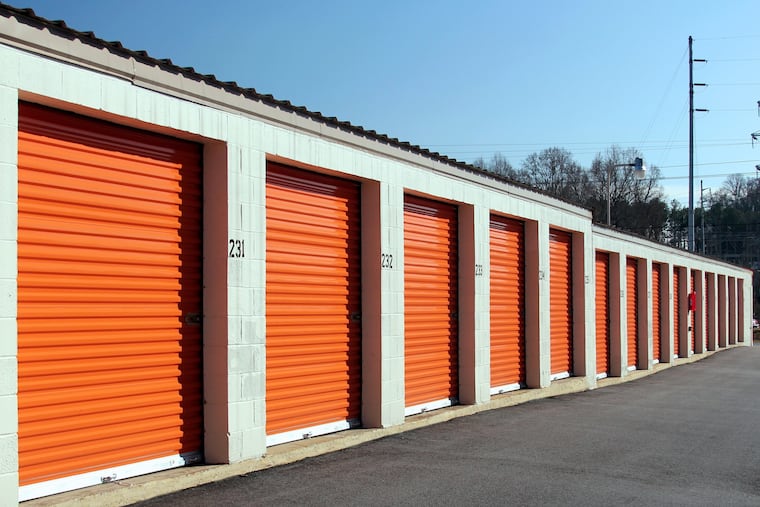Need to stash your stuff in a storage unit? Here are some tips for getting the best price.
Because storage-unit costs are so expensive, the math becomes irrational for many who rent them. After a short time, most will have paid more in rent and fees than their belongings are worth.

Exhibit A that Americans own way too much stuff: The U.S. self-storage industry rakes in more than $44 billion per year.
While some people rent storage units because they are moving to new homes that aren’t ready yet, need to get belongings out of the way during remodels, or must park their stuff while temporarily relocating, most pay for the extra space because they’ve accumulated more property than they can fit into their abodes. That’s despite America’s average home size ballooning from 983 square feet in 1950 to more than 2,000 today.
Because storage-unit costs are so expensive, the math becomes irrational for many who rent them: After a short time, most will have paid more in rent and fees than their belongings are worth.
If you decide to rent a storage unit, shop around to save. Nonprofit Delaware Valley Checkbook’s undercover shoppers collected prices from a sampling of self-storage companies throughout the area. Here’s what they found, plus some shopping and storage tips. You can view Checkbook’s full self-storage report and all of Checkbook’s ratings and advice until Aug. 5 at Checkbook.org/Inquirer/storage.
Shop around. Shoppers found big facility-to-facility cost differences for similarly sized spaces. For example, to rent a 10-by-20-foot unit for a year, prices ranged from $1,561 to $6,183.
Ask for a discount. Then ask again. Without asking, Checkbook’s shoppers were sometimes offered half off the first month’s rent or the first month for $1. Ask about similar introductory deals. We found that some facilities readily offered discounts when our shoppers said they would call other facilities for price quotes.
Competition among storage facilities is fierce, and they highly value new customers. Because it’s a pain to shuttle stuff from place to place, storage companies know that once someone has rented a unit, they’re likely to keep it for months or years.
Check different locations. You might find lower prices (even within the same chain) as you get farther out into the suburbs. If you don’t need to visit your storage unit often, consider grabbing those savings.
Availability drives pricing. Check whether renting two or more separate units is less expensive than getting one large space. Most facilities use dynamic pricing that is guided by availability: If a certain type or size of unit is in short supply, it’s offered at a high price. Checkbook sometimes found it was cost effective to lease two smaller units instead of one large one.
Don’t assume chains offer the lowest prices. Checkbook found no consistent price winners among the various self-storage chains.
Consider floor level. Ground-floor storage may be more convenient, but storage on higher floors sometimes costs less. So long as units on higher floors are elevator-accessible (and almost all are), the savings may justify the minor inconvenience.
Climate-control costs. Many facilities offer climate-controlled units. That makes them more comfortable to be in when you’re moving goods in and out. It also reduces risk of damage to your goods, for instance, from mildew, from freezing if you will be storing liquids, or from heat damage to glues if you will be stashing antique furniture. But climate-controlled units typically cost 20% to 40% more.
Consider indoor vs. outdoor access. At some facilities, you have a choice between outdoor access (drive up and unload directly) or inside access (located on a hallway). Outdoor access is often more expensive.
Consider a long-term commitment. Some storage spots offer lower rates if you commit to six months or a year, or prepay several months’ rent.
Beware of extra fees. Many facilities charge one-time “administration,” “set up,” or “processing” fees. These junk fees were modest, for the most part, but check anyway.
Check your insurance coverage. If you have a homeowners’ or renters’ insurance policy that covers your personal property away from your house, you probably don’t need to buy extra coverage from the storage company; ask your insurer to make sure. If your belongings aren’t covered, you can buy insurance from the storage company. It’s usually an expensive add-on: At several facilities, a modest $15,000 of coverage costs more than $25 per month.
Check hours of access. If you’ll need odd-hours access, know that some spots aren’t open 24/7.
Consider alternatives. Other options exist for parking your odds and ends. If you need to clear space for a remodel, you can rent a mobile storage container for your driveway; they cost about half what you’d pay at a self-storage facility. And if you want to hire someone to do all this schlepping and storing for you, moving companies usually offer that.
Delaware Valley Consumers’ Checkbook magazine and Checkbook.org is a nonprofit organization with a mission to help consumers get the best service and lowest prices. We are supported by consumers and take no money from the service providers we evaluate.